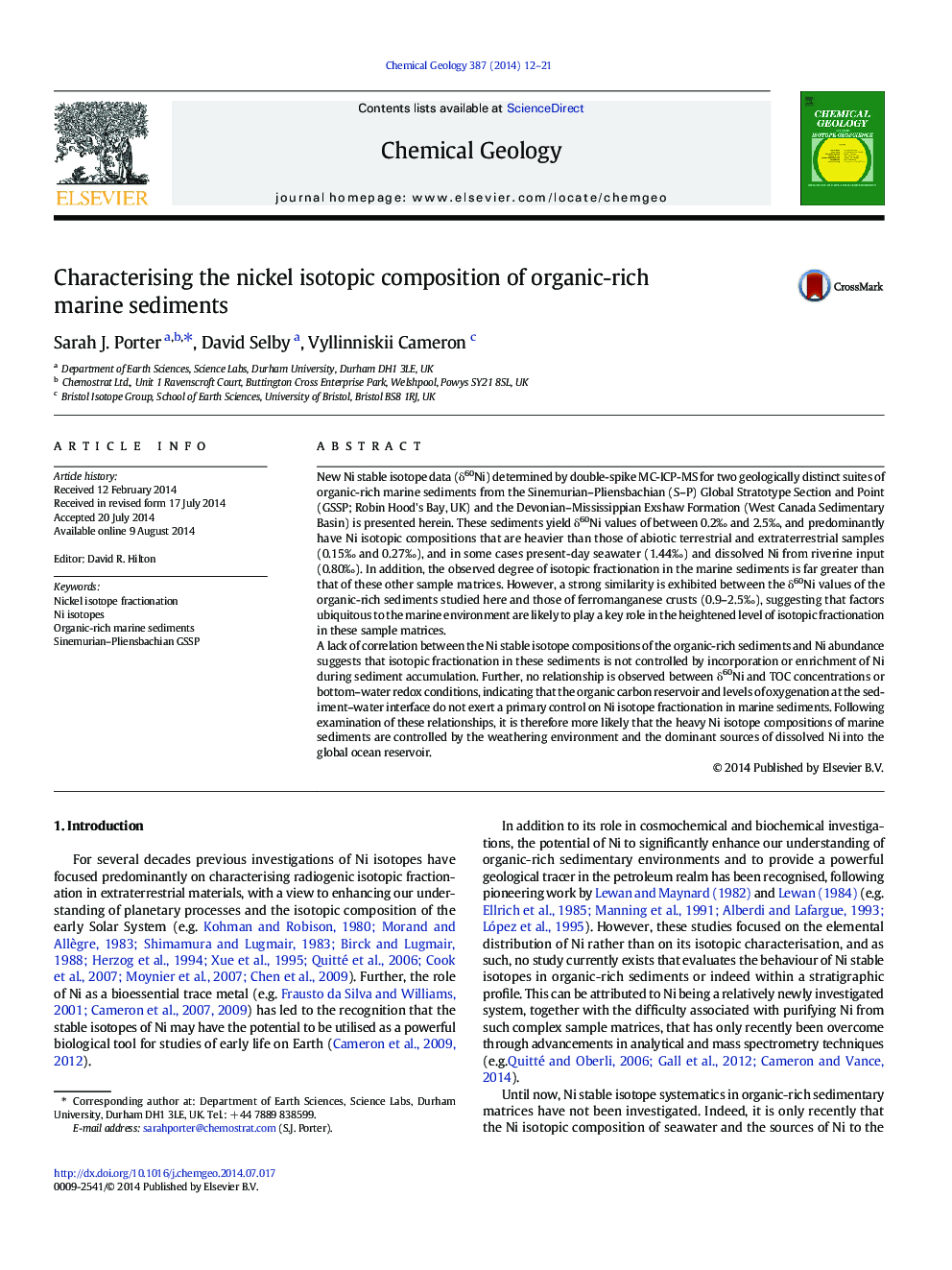| کد مقاله | کد نشریه | سال انتشار | مقاله انگلیسی | نسخه تمام متن |
|---|---|---|---|---|
| 6436559 | 1637585 | 2014 | 10 صفحه PDF | دانلود رایگان |
- New Ni stable isotope data for two suites of organic-rich marine sediments (ORMS)
- The Ni isotope compositions (Ni IC) of both suites are comparable
- The Ni IC of ORMS are heavier than bulk Earth samples and present-day seawater
- The Ni IC of ORMS are comparable to that of ferromanganese crusts
- Factors ubiquitous to the marine realm are likely to drive fractionation in ORMS
New Ni stable isotope data (δ60Ni) determined by double-spike MC-ICP-MS for two geologically distinct suites of organic-rich marine sediments from the Sinemurian-Pliensbachian (S-P) Global Stratotype Section and Point (GSSP; Robin Hood's Bay, UK) and the Devonian-Mississippian Exshaw Formation (West Canada Sedimentary Basin) is presented herein. These sediments yield δ60Ni values of between 0.2â° and 2.5â°, and predominantly have Ni isotopic compositions that are heavier than those of abiotic terrestrial and extraterrestrial samples (0.15â° and 0.27â°), and in some cases present-day seawater (1.44â°) and dissolved Ni from riverine input (0.80â°). In addition, the observed degree of isotopic fractionation in the marine sediments is far greater than that of these other sample matrices. However, a strong similarity is exhibited between the δ60Ni values of the organic-rich sediments studied here and those of ferromanganese crusts (0.9-2.5â°), suggesting that factors ubiquitous to the marine environment are likely to play a key role in the heightened level of isotopic fractionation in these sample matrices.A lack of correlation between the Ni stable isotope compositions of the organic-rich sediments and Ni abundance suggests that isotopic fractionation in these sediments is not controlled by incorporation or enrichment of Ni during sediment accumulation. Further, no relationship is observed between δ60Ni and TOC concentrations or bottom-water redox conditions, indicating that the organic carbon reservoir and levels of oxygenation at the sediment-water interface do not exert a primary control on Ni isotope fractionation in marine sediments. Following examination of these relationships, it is therefore more likely that the heavy Ni isotope compositions of marine sediments are controlled by the weathering environment and the dominant sources of dissolved Ni into the global ocean reservoir.
Journal: Chemical Geology - Volume 387, 10 November 2014, Pages 12-21
